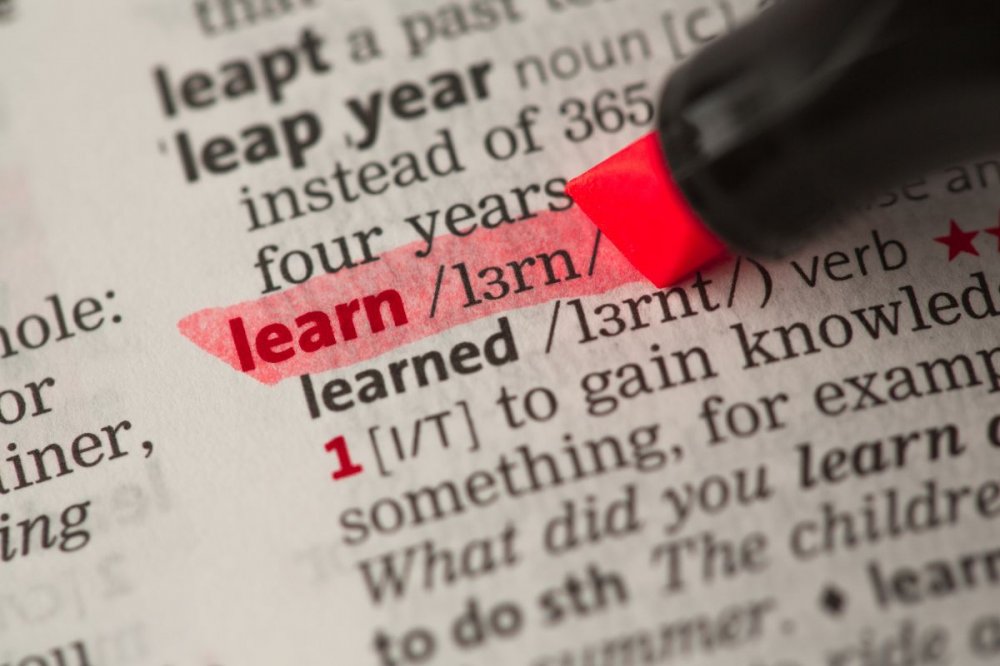- Our School
- Our Advantage
- Admission
- Elementary•Middle School
- High School
- Summer
- Giving
- Parent Resources
- For Educators
- Alumni
« Back
Learning Disability Terms Defined and Demystified
June 5th, 2024
As you go through the process of having your child assessed for and potentially diagnosed with a language-based learning disability (LBLD) such as dyslexia, which is a Specific Learning Disabilities (SLD), you will encounter an alphabet soup of acronyms and terms. Just this first sentence can have your mind spinning. Let's see if we can help you out!
Here are definitions of frequently encountered terms in the world of Learning Disabilities.
Accommodations
Services provided to a student in school that allow "a student to complete the same assignment or test as other students, but with a change in the timing, formatting, setting, scheduling, response and/or presentation."1
Anxiety Disorders
"Disorders that share features of excessive fear and anxiety and related behavioral disturbances."2
Assistive Technology
“People who learn and think differently can use technology to help work around their challenges. This is called assistive technology (AT). AT helps people with disabilities learn, communicate, or function better. It can be as high-tech as a computer, or as low-tech as a pencil grip. It’s a type of accommodation that involves tools. Assistive technology has two parts: devices (the actual tools people use) and services (the support to choose and use the tools).”3
Attention Deficit Hyperactivity Disorder (ADHD)
“A persistent pattern of inattention and/or hyperactivity-impulsivity that interferes with functioning or development.”4
- Inattention manifests behaviorally in ADHD as wandering off task, lacking persistence, having difficulty sustaining focus, and being disorganized and is not due to defiance or lack of comprehension.
- Hyperactivity refers to excessive motor activity when it is not appropriate, or excessive fidgeting, tapping, or talkativeness.
- Impulsivity refers to hasty actions that occur in the moment without forethought and that have high potential for harm to the individual.5
Central Auditory Processing Disorder (CAPD)
“Refers to deficits in the neural processing of auditory information in the Central Auditory Nervous System (CANS)...not attributed to impaired peripheral hearing sensitivity or intellectual impairment.”6 Deficits in this area create “limitations in the ongoing transmission, analysis, organization, transformation, elaboration, storage, retrieval, and use of information contained in audible signals.”7 A CAPD may impact a person’s ability to:
- attend, discriminate, and identify acoustic signals;
- transform and continuously transmit information through both the peripheral and central nervous systems;
- filter, sort, and combine information at appropriate perceptual and conceptual levels;
- store and retrieve information efficiently; restore, organize, and use retrieved information;
- segment and decode acoustic stimuli using phonological, semantic, syntactic, and pragmatic knowledge; and
- attach meaning to a stream of acoustic signals through use of linguistic and nonlinguistic contexts.
Comorbidity
The presence of more than one distinct condition in an individual. The conditions can include: diseases, disorders, conditions, illnesses, or health problems.8 For people with SLD and LBLDs these conditions commonly include anxiety, attention deficit hyperactivity disorder, and language disorder, among others.9
Communication Impairment
“The capacity to use expressive and/or receptive language is significantly limited, impaired, or delayed and is exhibited by difficulties in one or more of the following areas: speech, such as articulation and/or voice; conveying, understanding, or using spoken, written, or symbolic language. The term may include a student with impaired articulation, stuttering, language impairment, or voice impairment if such impairment adversely affects the student's educational performance.”10
Decoding
Decoding is the process of translating print into speech by rapidly matching a letter or combination of letters (graphemes) to their sounds (phonemes) and recognizing the patterns that make syllables and words.11
Developmental Language Disorder
“DLD is a brain-based, developmental disorder that makes using language and understanding language difficult. It can cause academic and/or social-emotional difficulties.” “DLD can co-occur with other disorders, such as dyslexia and attention deficit Hyperactivity Disorder (ADHD).”12
Learn about other terms used for DLD
Dyslexia
"Dyslexia is a learning disability in reading. People with dyslexia have trouble reading at a good pace and without mistakes. They may also have a hard time with reading comprehension, spelling, and writing. But these challenges aren’t a problem with intelligence."13
Learn more about dyslexia by reading these frequently asked questions about dyslexia from the International Dyslexia Association.
Dyscalculia
Dyscalculia is a learning disorder that results in “difficulty acquiring basic arithmetic skills that is not explained by low intelligence or inadequate schooling.14 People with dyscalculia have difficulties “processing numerical information, learning arithmetic facts, and performing accurate or fluent calculations.15
Read more details about dyscalculia, including symptoms and strategies to help students who have dyscalculia.
Dysgraphia
“Dysgraphia is a neurological disorder characterized by writing disabilities. Specifically, the disorder causes a person's writing to be distorted or incorrect. In children, the disorder generally emerges when they are first introduced to writing. They make inappropriately sized and spaced letters or write wrong or misspelled words, despite thorough instruction. Children with the disorder may have other learning disabilities; however, they usually have no social or other academic problems. In addition to poor handwriting, dysgraphia is characterized by wrong or odd spelling, and production of words that are not correct (i.e., using "boy" for "child").16
Read more about dysgraphia, including symptoms and recommended accommodations.
Executive Function
“A set of processes that all have to do with managing oneself and one's resources in order to achieve a goal. It is an umbrella term for the neurologically-based skills involving mental control and self-regulation.”17 These processes include (but are not limited to): initiating tasks, planning, organizing materials, and self-monitoring.
Fluid Reasoning
"The capacity to think logically and solve problems in novel situations, independent of acquired knowledge. It is an essential component of cognitive development, as this capacity serves as a scaffold for children, in helping them acquire other abilities.”18
Impairment of Written Expression
Impairment of written expression is a learning difficulty that results in difficulty with “spelling accuracy, grammar and punctuation accuracy, and clarity or organization of written expression.”19
Intervention
An intervention is a formal, specific program or set of steps to help a child improve in an area of need. It lasts a set period of time and a child’s progress is measured and reviewed at predetermined intervals.20
Multisensory Teaching
Multisensory teaching is simultaneously visual, auditory, and kinesthetic-tactile to enhance memory and learning. Links are consistently made between the visual (what we see), auditory (what we hear), and kinesthetic-tactile (what we feel) pathways in learning to read and spell.21
Language-Based Learning Disabilities (LBLDs)
LBLDs cause “problems with age-appropriate reading, spelling, and/or writing. Most people diagnosed with learning disabilities have average to superior intelligence.”22 People with LBLDs can also struggle with speaking and listening. LBLDs fall under the broader umbrella of Specific Learning Disability (SLD).
Language Disorder
“A language disorder is impaired comprehension and/or use of spoken, written and/or other symbol systems.” Comprehension is also referred to as receptive language, while use is typically referred to as expressive language. “The disorder may involve (1) the form of language (phonology, morphology, syntax), (2) the content of language (semantics), and/or (3) the function of language in communication (pragmatics) in any combination.”23
Phonemic Awareness
Phonemic awareness is the most sophisticated aspect of phonological awareness. It is "the ability to notice, think about, and work with the individual sounds in words.”24
Phonological Awareness
“A skill that includes identifying and manipulating units of oral language, such as words, syllables, sounds, and onsets and rimes.”24
Pragmatics
See Social (Pragmatic) Communication Disorder.
Processing Speed
The pace at which one takes in information (either visually or auditorily), makes sense of it, and begins to respond.25
Reading Comprehension
“The understanding and interpretation of what is read. To be able to accurately understand written material, children need to be able to (1) decode what they read; (2) make connections between what they read and what they already know; and (3) think deeply about what they have read.”26
Reading Fluency
“The ability to read a text accurately, quickly, and with expression. Fluency is important because it provides a bridge between word recognition and comprehension.”27
Social (Pragmatic) Communication Disorder (SCD)
An SCD "is characterized by a persistent difficulty with verbal and nonverbal communication that cannot be explained by low cognitive ability. Symptoms include difficulty in the acquisition and use of spoken and written language as well as problems with inappropriate responses in conversation. The disorder limits effective communication, social relationships, academic achievement, or occupational performance. Symptoms must be present in early childhood even if they are not recognized until later when speech, language, or communication demands exceed abilities.” 28
Learn more about Social Communication Disorder, including symptoms, assessment, and treatment.
Specific Learning Disability (SLD)
An SLD is a “disorder in one or more of the basic psychological processes involved in understanding or in using language, spoken or written, in which the disorder may manifest itself in the imperfect ability to listen, think, speak, read, write, spell, or do mathematical calculations, including conditions such as perceptual disabilities, brain injury, minimal brain dysfunction, dyslexia, and developmental aphasia.”29
Syllabication
The act of breaking words into syllables (parts of words containing a single vowel sound).30
Visual-spatial Ability
“The capacity to understand and remember the spatial relations among objects…Visual-spatial skills are of great importance for success in solving many tasks in everyday life. For instance, using a map to guide you through an unfamiliar city, merging into high-speed traffic, and orienting yourself in your environment.”31
Word Attack
Skills used to decode, pronounce, and understand unfamiliar words.
Working Memory
A system for temporarily storing and managing the information required to carry out complex cognitive tasks such as learning, reasoning, and comprehension.32
- Understood.org. The Difference Between Accommodations and Modifications [webpage]. Retrieved from https://www.understood.org/en/learning-attention-issues/treatments-approaches/educational-strategies/the-difference-between-accommodations-and-modifications
- American Psychiatric Association (2013). Diagnostic and Statistical Manual of Mental Disorders: DSM-5 (5th ed.). Arlington, VA: American Psychiatric Association. p. 189
Andrew M.I. Lee, J. (n.d.). What is assistive technology?. Understood.org. https://www.understood.org/en/articles/assistive-technology
- American Psychiatric Association (2013). Diagnostic and Statistical Manual of Mental Disorders: DSM-5 (5th ed.). Arlington, VA: American Psychiatric Association. p. 61
- American Psychiatric Association (2013). Diagnostic and Statistical Manual of Mental Disorders: DSM-5 (5th ed.). Arlington, VA: American Psychiatric Association. p. 61
- American Speech-Language-Hearing Association. (Central) Auditory Processing Disorders (webpage]. Retrieved from https://www.asha.org/policy/tr2005-00043.htm
- American Speech-Language-Hearing Association. Definitions of Communication Disorders and Variations (webpage) Retrieved from https://www.asha.org/policy/rp1993-00208/
- National Center for Biotechnology Information, U.S. National Library of Medicine. Defining Comorbidity: Implications for Understanding Health and Health Services [webpage]. Retrieved from https://www.ncbi.nlm.nih.gov/pmc/articles/PMC2713155/
- National Center for Biotechnology Information, U.S. National Library of Medicine. Neuropsychopathological Comorbidities in Learning Disorders [webpage]. Retrieved from: https://www.ncbi.nlm.nih.gov/pmc/articles/PMC3878726/
Massachusetts Department of Elementary and Secondary Education. (n.d.). Disability definitions and related links. Disability Definitions and Related Links - Special Education. https://www.doe.mass.edu/sped/definitions.html
Reading Horizons. (2022, November 26). What is decoding? https://readinghorizons.website/reading-strategies/decoding/what-is-decoding
DLD: Developmental language disorder: Language disorder. DLD and Me. (2023, July 26). https://dldandme.org/#what-is-dld
What is Dyslexia?. Understood.org. (n.d.). https://www.understood.org/en/articles/what-is-dyslexia
- U.S. National Library of Medicine (November 9, 2012). The Diagnosis and Management of Dyscalculia [webpage]. Retrieved from https://www.ncbi.nlm.nih.gov/pmc/articles/PMC3514770/
- American Psychiatric Association (2013). Diagnostic and Statistical Manual of Mental Disorders: DSM-5 (5th ed.). Arlington, VA: American Psychiatric Association. p. 67
- National Institute of Neurological Disorders and Stroke. Dysgraphia Information Page [webpage]. Retrieved from https://www.ninds.nih.gov/Disorders/All-Disorders/Dysgraphia-Information-Page
- LD OnLine. What Is Executive Functioning? [webpage]. Retrieved from LD OnLine http://www.ldonline.org/article/29122/
- National Center for Biotechnology Information, U.S. National Library of Medicine. Fluid Reasoning and the Developing Brain [webpage]. Retrieved from https://www.ncbi.nlm.nih.gov/pmc/articles/PMC2858618/
- American Psychiatric Association (2013). Diagnostic and Statistical Manual of Mental Disorders: DSM-5 (5th ed.). Arlington, VA: American Psychiatric Association. p. 67
- Understood.org. Instructional Intervention: What You Need to Know [webpage]. Retrieved from https://www.understood.org/en/learning-attention-issues/treatments-approaches/educational-strategies/instructional-intervention-what-you-need-to-know
Multisensory Teaching. The International Dyslexia Association. (n.d.). http://ma.dyslexiaida.org/wp-content/uploads/sites/7/2016/03/Multisensory_Teaching.pdf
- American Speech-Language-Hearing Association (ASHA). Language-Based Learning Disabilities (Reading, Spelling, and Writing) [webpage]. Retrieved from http://www.asha.org/public/speech/disorders/LBLD.htm
Definitions of communication disorders and variations. American Speech-Language-Hearing Association. (1993, January 1). https://www.asha.org/policy/rp1993-00208/
- Reading Rockets. Phonological and Phonemic Awareness [webpage]. Retrieved from http://www.readingrockets.org/helping/target/phonologicalphonemic
- Understood.org. Processing Speed: What You Need to Know [webpage]. Retrieved from: https://www.understood.org/en/learning-attention-issues/child-learning-disabilities/information-processing-issues/processing-speed-what-you-need-to-know
- Reading Rockets. Comprehension [webpage]. Retrieved from: http://www.readingrockets.org/helping/target/comprehension
- Reading Rockets. Fluency [webpage]. Retrieved from: http://www.readingrockets.org/teaching/reading-basics/fluency
- Diagnostic and Statistical Manual of Mental Disorders, 5th Edition (DSM-5) (2013). [webpage]. Retrieved from http://dsm.psychiatryonline.org/doi/book/10.1176/appi.books.9780890425596
- U.S. Department of Education. Building the Legacy: IDEA 2004 [webpage]. Retrieved from http://idea.ed.gov/explore/view/p/,root,regs,300,A,300.8,c,.html
Glossary. Reading Rockets. (n.d.). https://www.readingrockets.org/teaching/glossary
- Johns Hopkins Center for Talented Youth. What Is Spatial Ability? [webpage]. Retrieved from http://cty.jhu.edu/talent/docs/SpatialMore.pdf
- MedicineNet.com. Working Memory [webpage]. https://www.medicinenet.com/script/main/art.asp?articlekey=7143
Posted in the category Learning Disabilities.






















